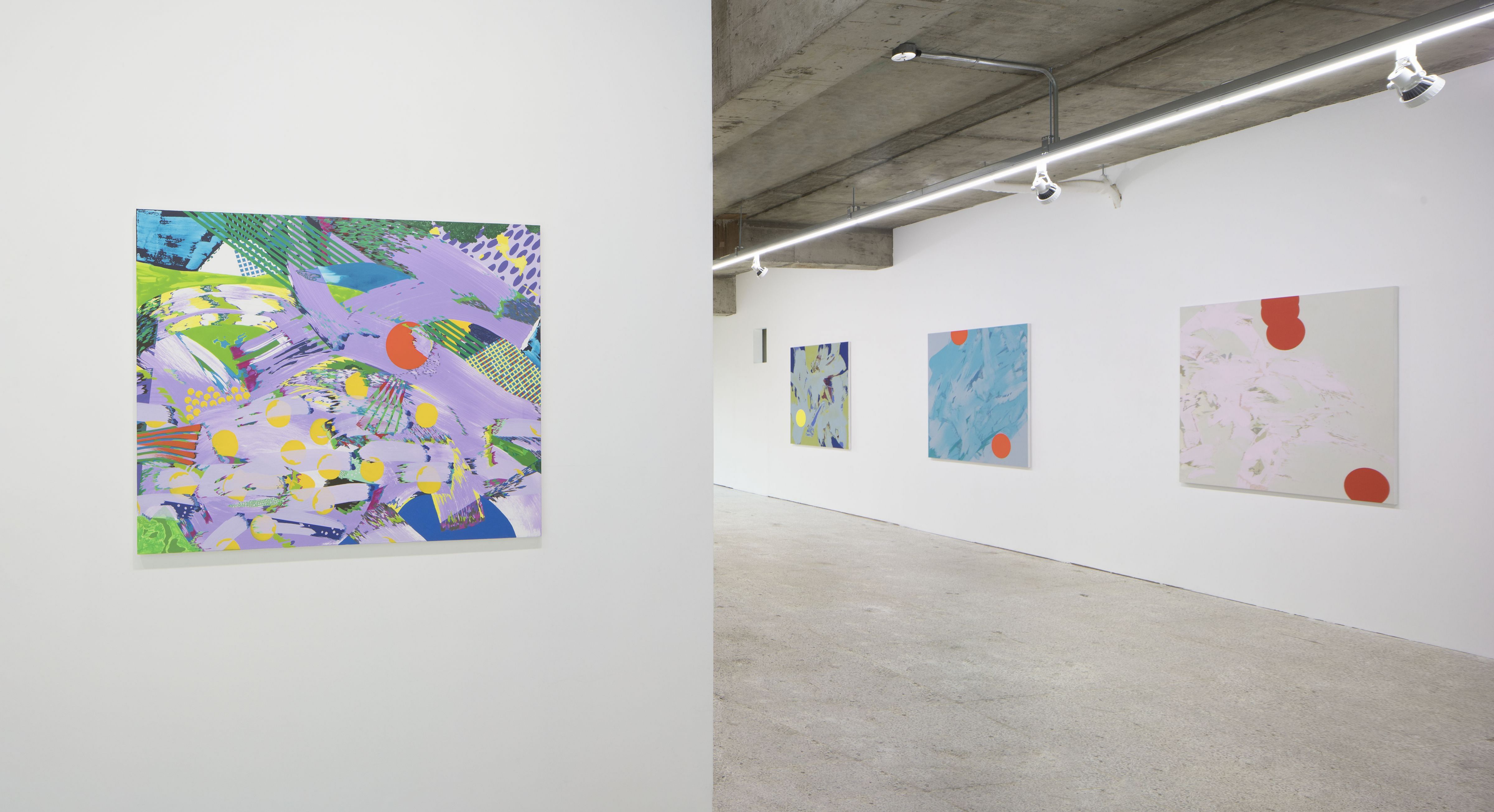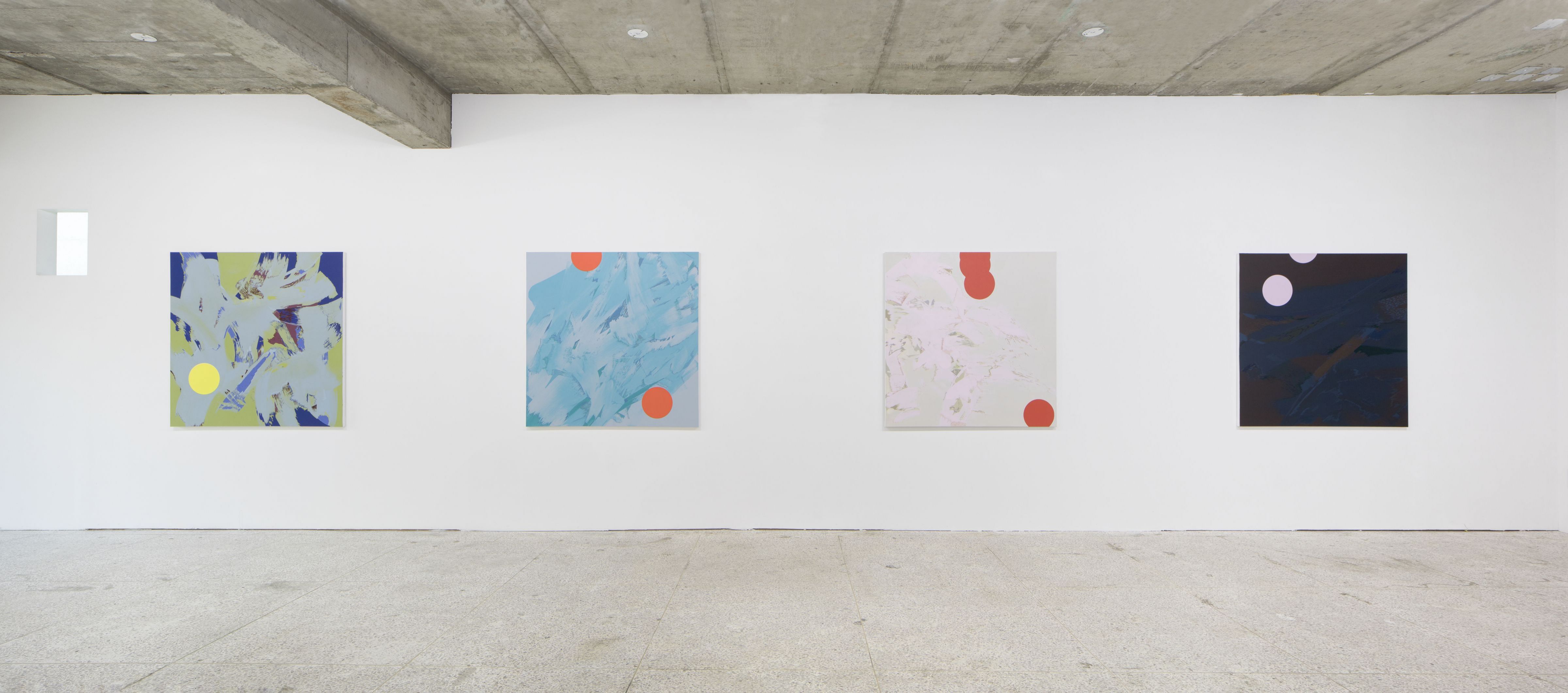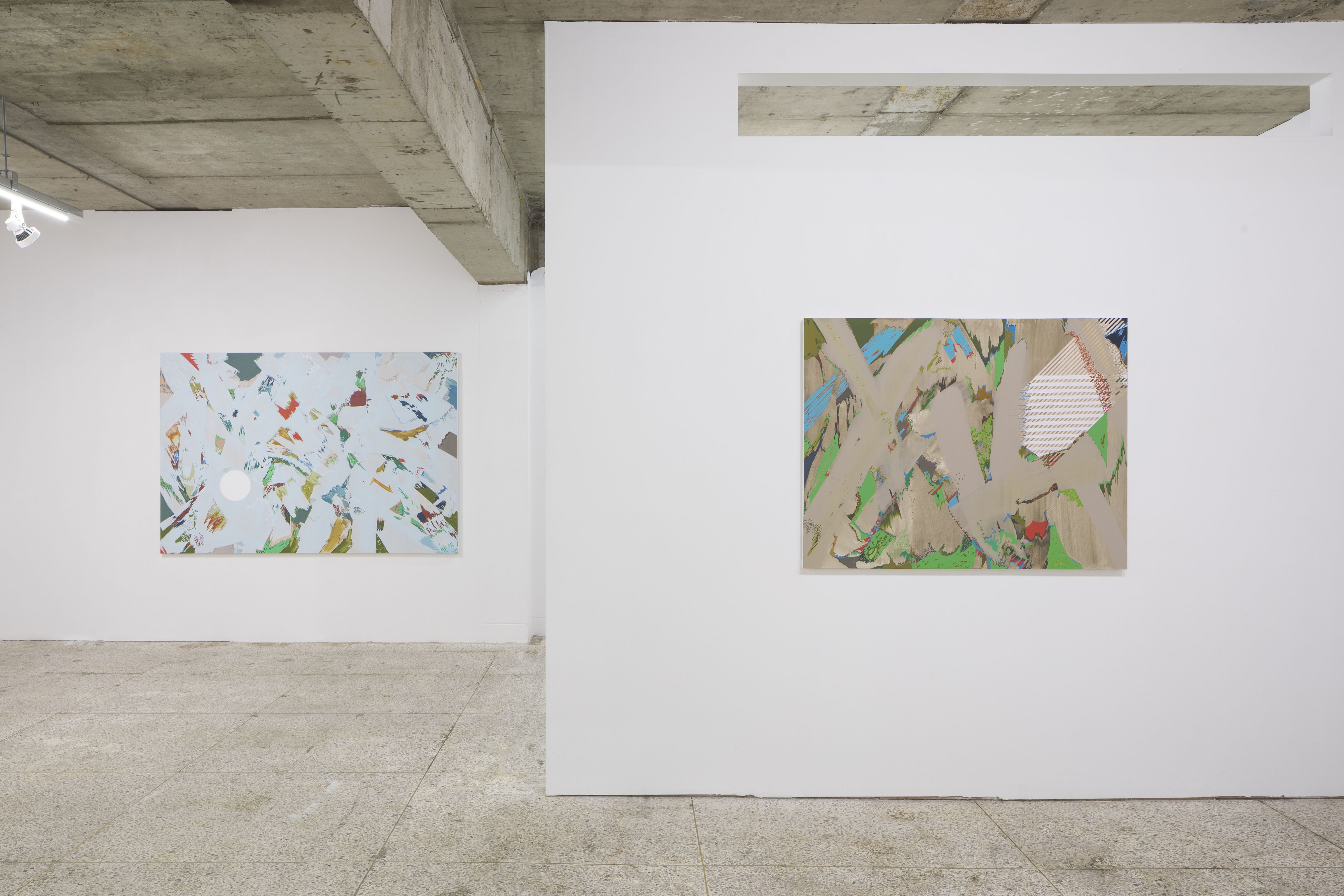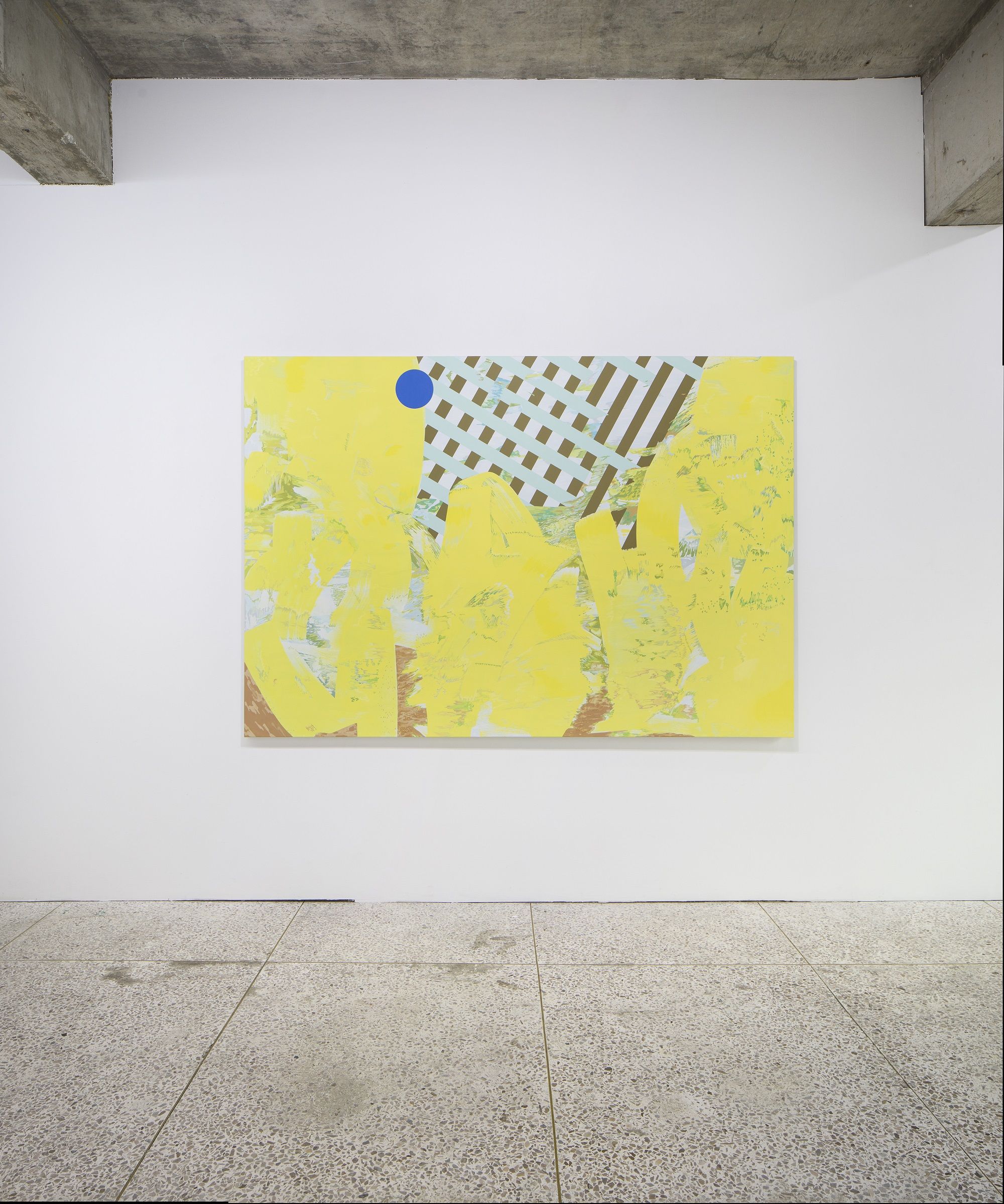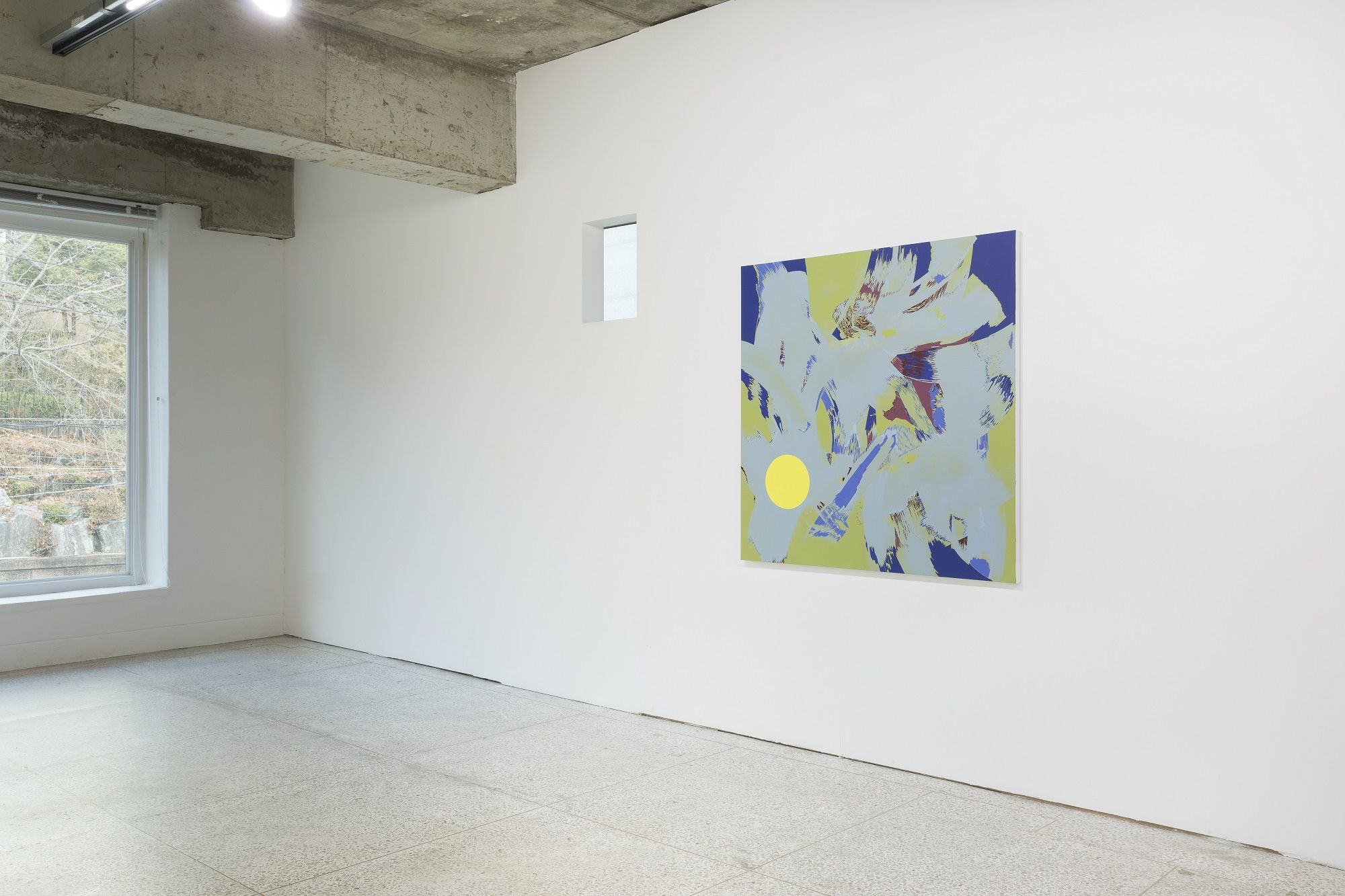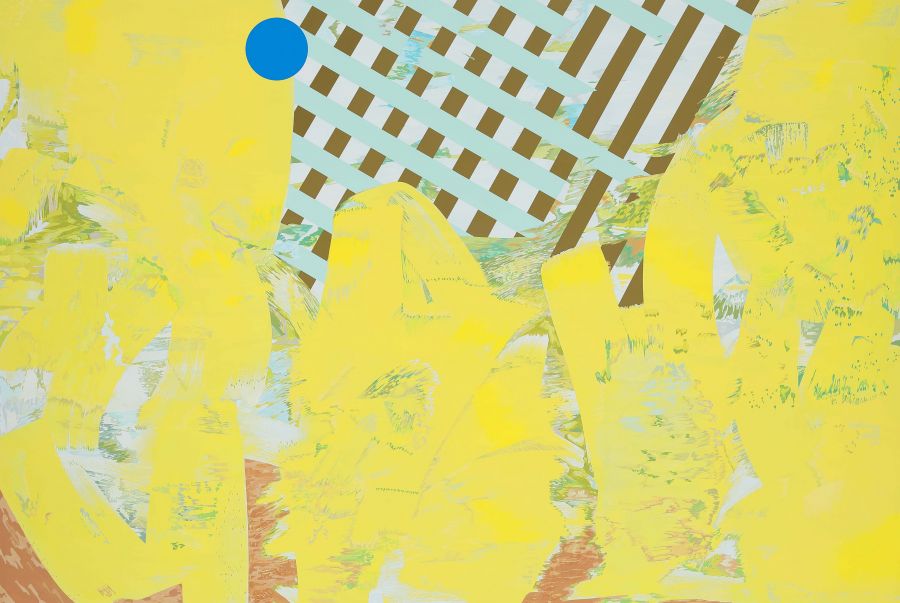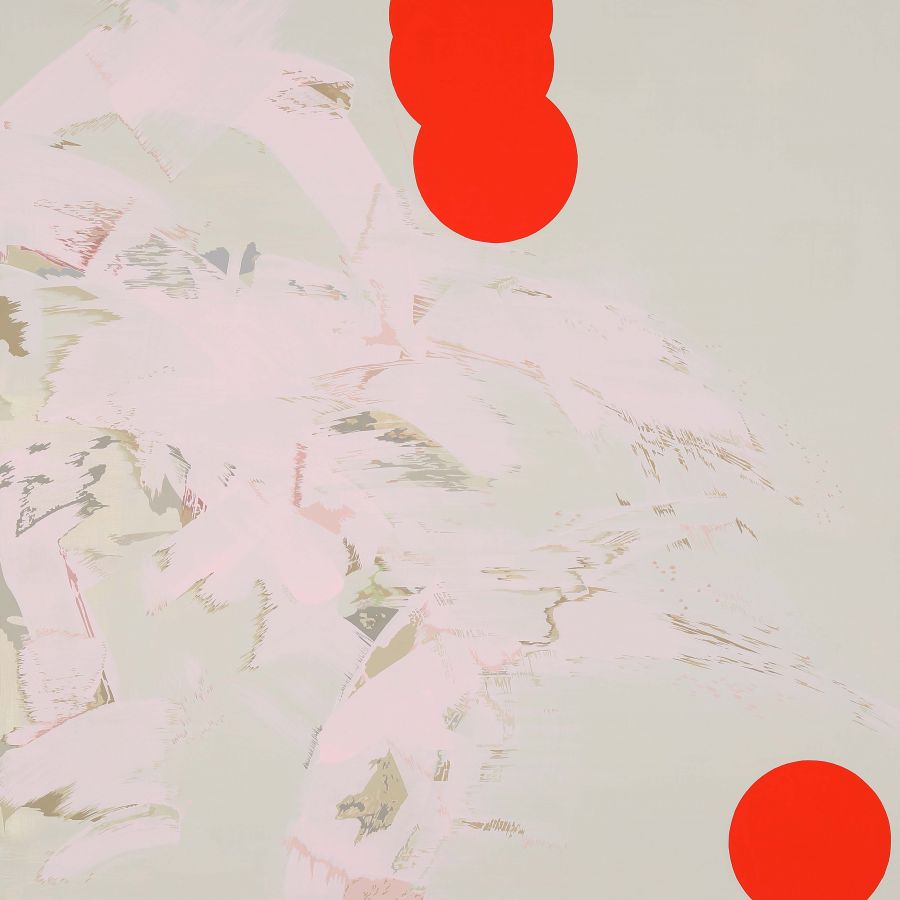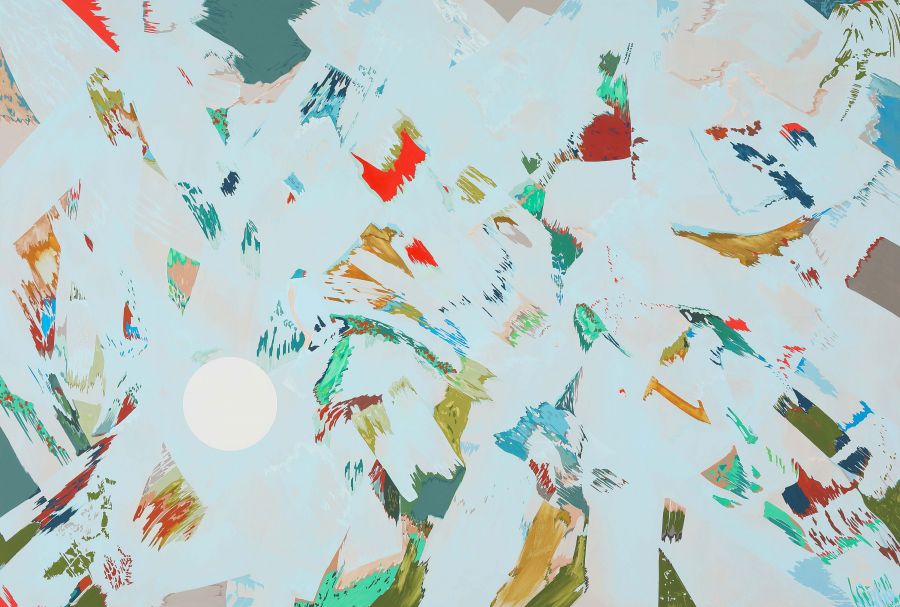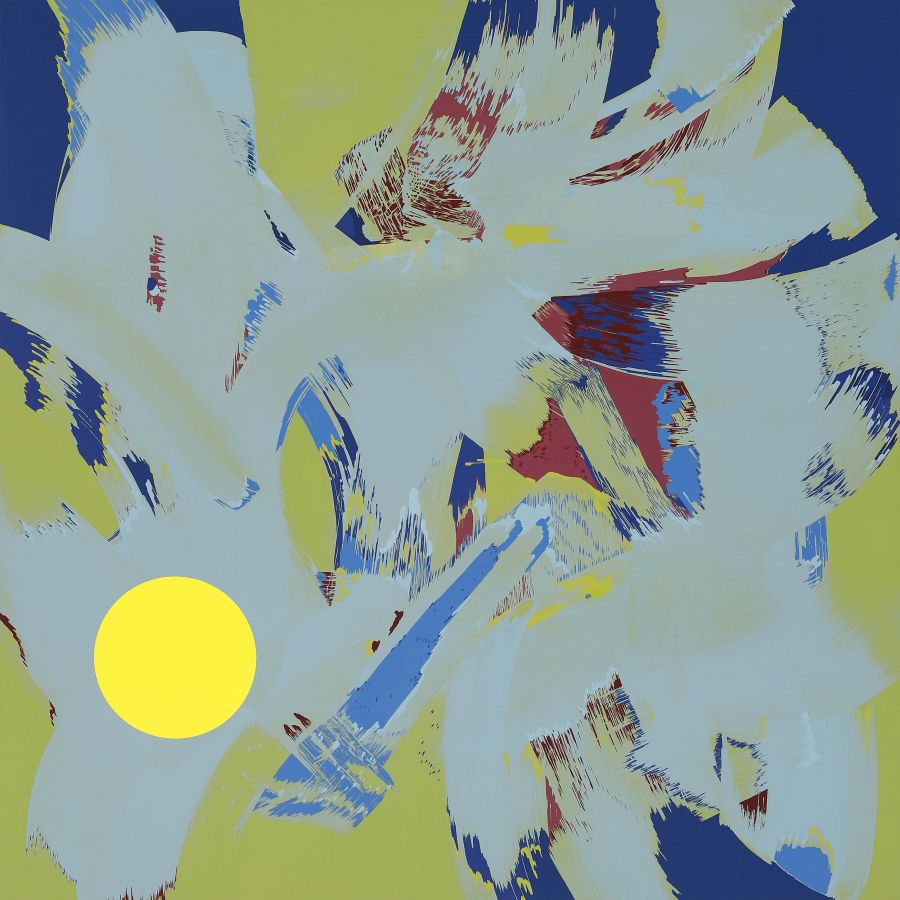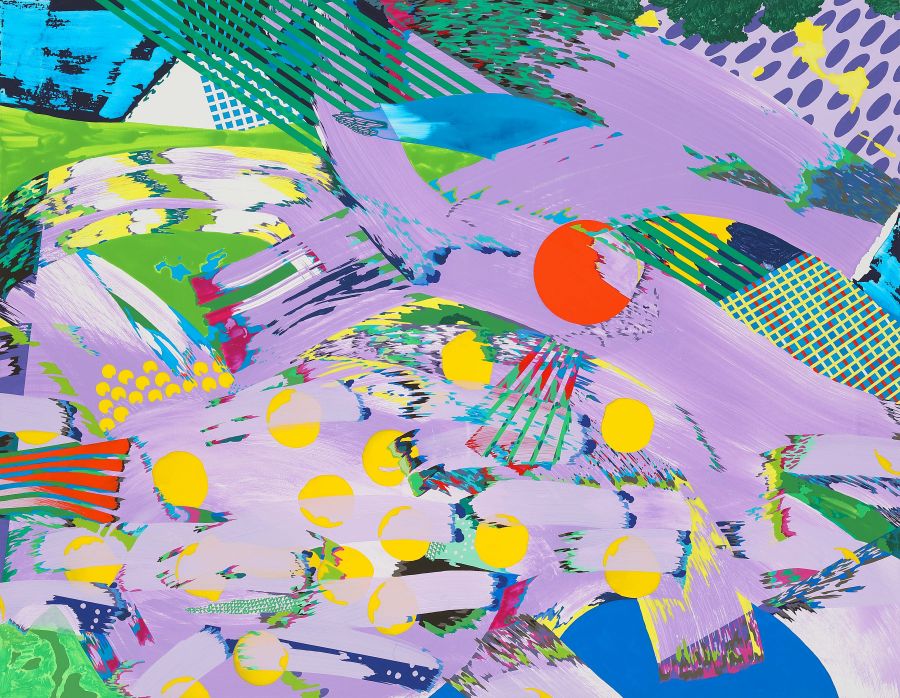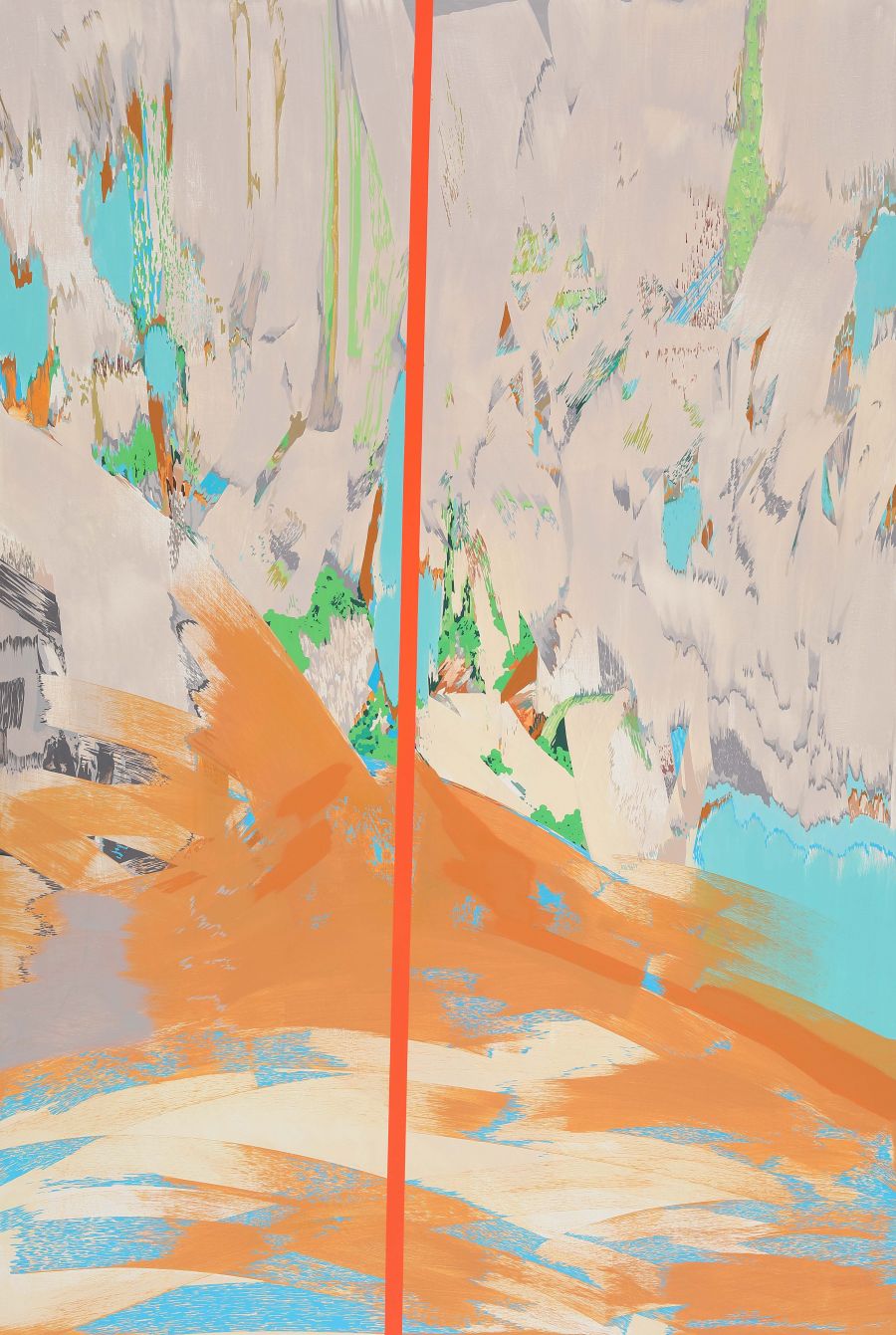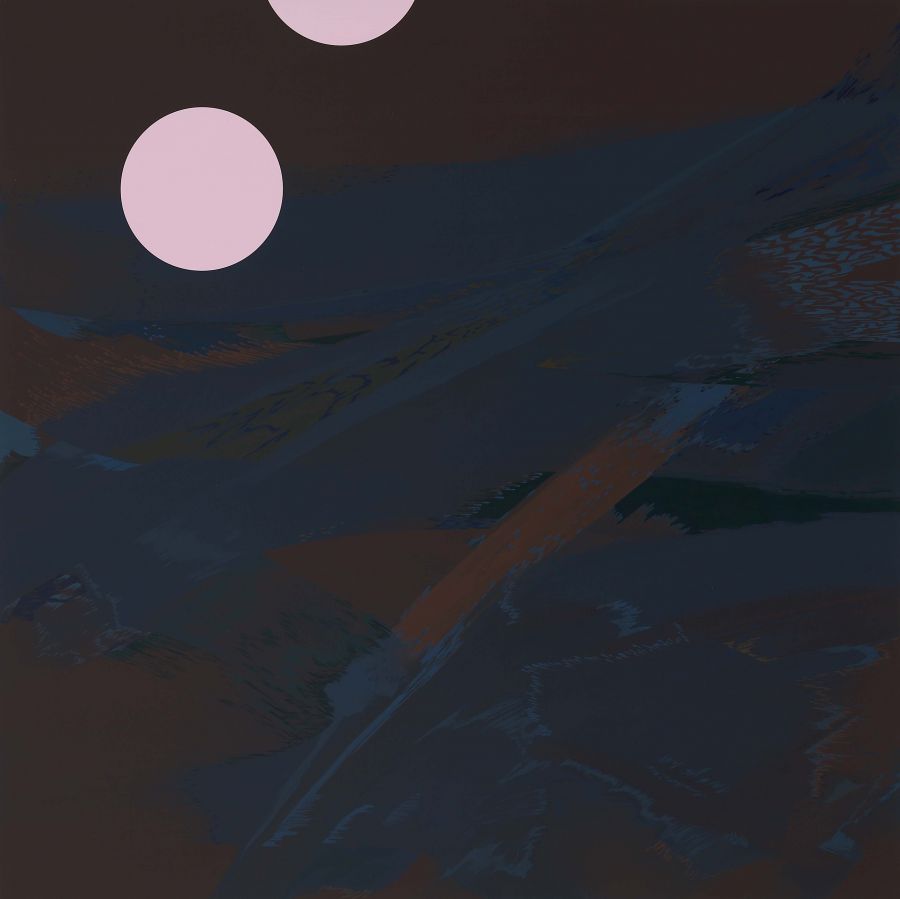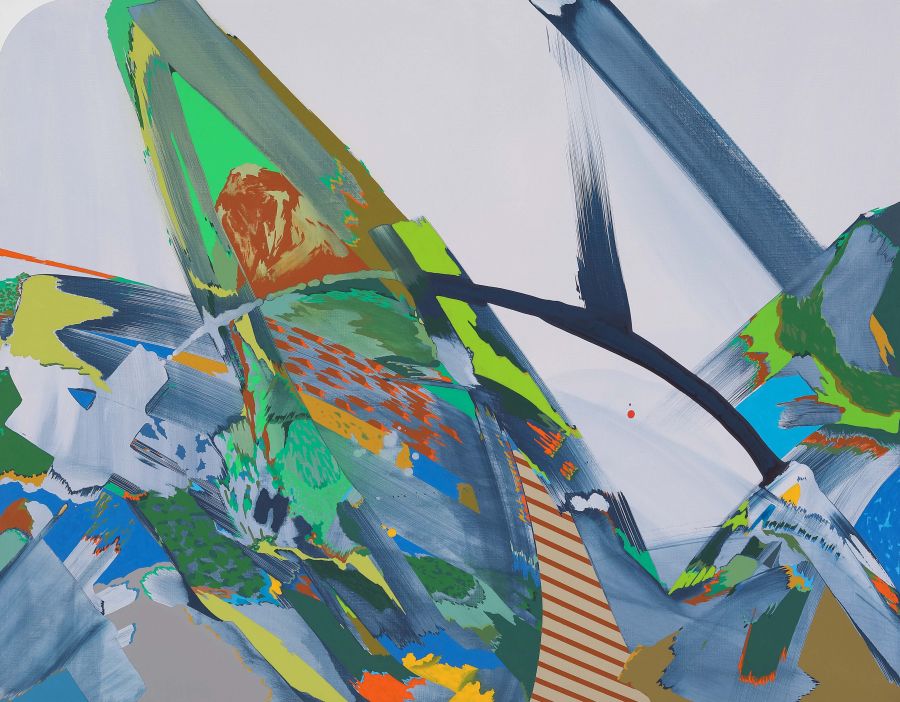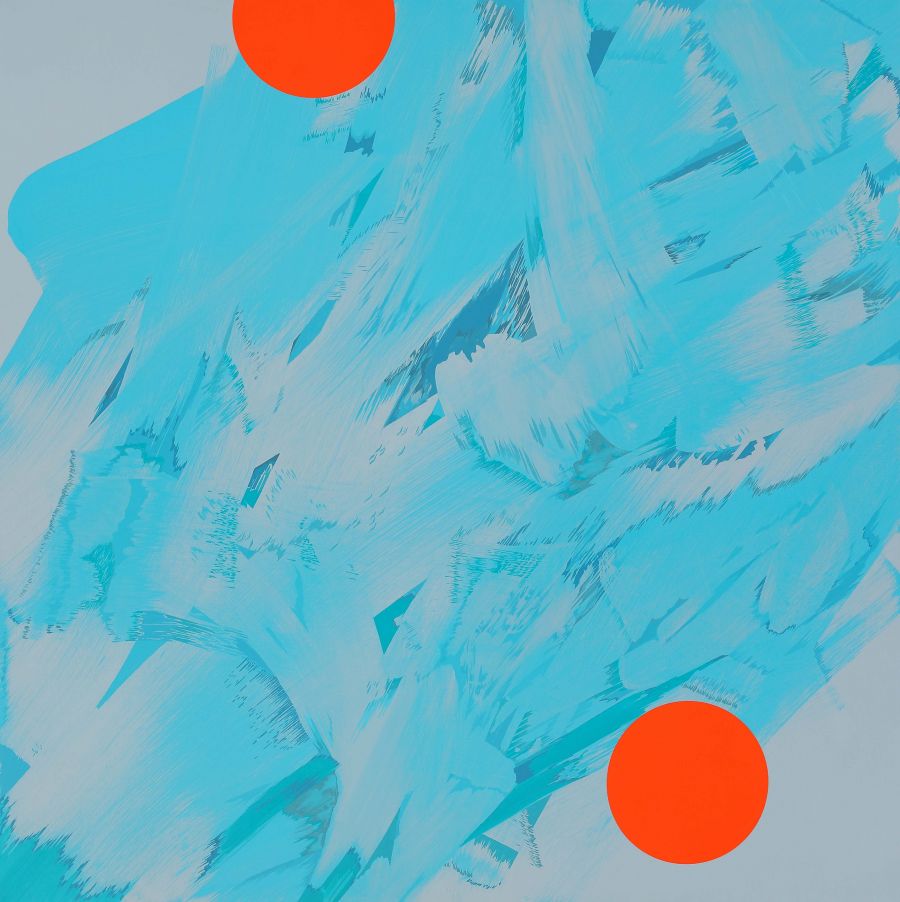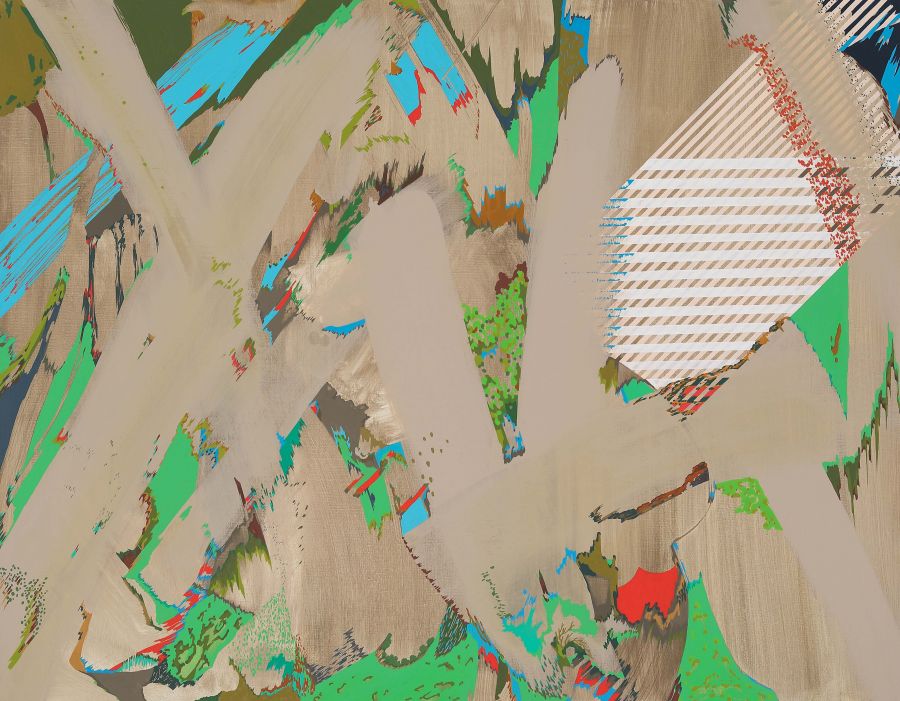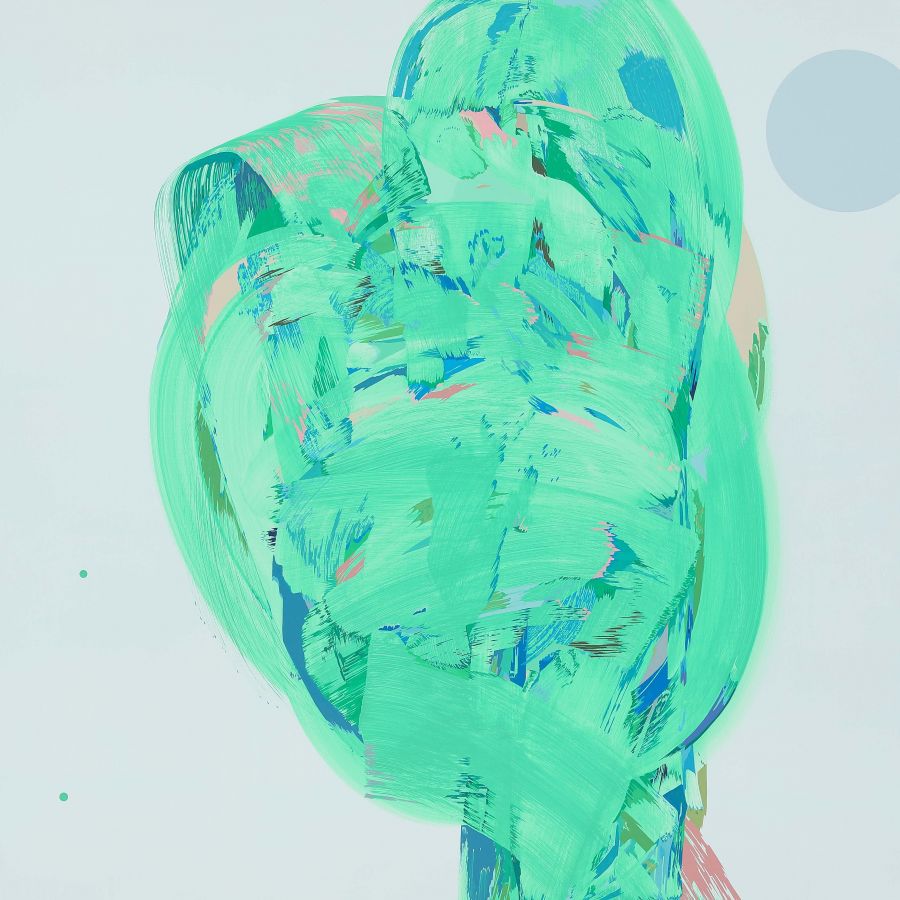The things that emerge, in the meantime
Images emerge anytime. However, it is not so easy to define the conditions in which the images emerge. Therefore, it is not a usual experience for an audience, who comes to see an exhibition thinking there would be an image, to face ‘the emergence of an image’. Why is that? ‘An image’ requires things beyond colors, forms, canvases and paints as the condition in which they emerge.
Let us consider the relationship between a visible object and a person looking at it. There is a process in which a 'viewer' faces a scene, extracts and captures an image from it. At this time, the 'viewer', whether well-trained or not, would attempt to identify and define the nature of the image with their own knowledge on ‘viewing’ in perceptional dimension. Regardless of whether the painting represents a real thing (person) or the canvas itself, the viewer seeks to find its meaning, symbol, and knowledge in it.
However, there is a time when something is crouching inside the pictorial field, regardless of the viewer's will or attention. This situation is quite problematic because the 'image' sways the viewer’s own sight and interpretation towards it and emerges all of sudden, unrelatedly to the cognitive system consisting of the viewer’s knowledge. In other words, the image leads and controls the viewer’s sight. The authority of seeing is not on the viewer's side, but belongs to the image. Accordingly, the image is not being discovered, but is rather 'emerging'.
Let us now consider the case of you being placed in this exhibition. The audience who just entered the gallery will see a swing of color, which holds a feeling of rhythm, in the foreground. Looking at the full colored circles, feeling the rhythm with a sense of movement that the colors create, the overall impression of Yim Ja-hyuk’s exhibition ‘In the Mean Time’ would be created in the viewer’s mind. Rather than representing specific figures, the paintings in the exhibition are the color itself, rounded circles, and the canvases entitled by ‘the colors’. The viewer’s sight would follow a certain sequence and wander over the colors. From <Very Light Pink> to <A little More Blue than Turquoise>, <Indescribable Light Green> to <A little More Blue than Turquoise>, <Very Light Pink>, and <Umber>. And, in a moment, from <Indescribable Light Green> to <Green with a Dash of White>, over to <Yellow>, from <Very Light Sky Blue> to <Light Gray> and <Brown with a Dash of White> to <Indigo Blue>.
Yes. The paintings in this exhibition have colors as their names. When a painting has a name, in many cases, the desire to find 'meaning' in the painting sticks to the name. Yim Ja-hyuk has always given specific names to her paintings, even though they often constricted her works semantically, and this is also true for the 11 paintings presented in this exhibition. However, these names do not actually include all the colors contained in one canvas, nor do they point to the colors from the given name. Rather, they intend to show a variety of colors which disturb viewer’s eyes through vivid complementary colors, so that the colors are scattered and dizzy over the spectrum along with the shapes that the artist layered on with a small brush (though looking rather smooth).
For example, for <Yellow>, which is filled with yellow color in the foreground, it is true that the name is largely responsible for the main impression of the canvas and the specially extracted color is yellow, but in truth one can see various colors in the front and back (or the inside and outside) of the color, yellow. You can see various colors, like different yellows, diluted by adding water, or blue mixed over it, green, brown and other 'indescribable'. Looking more closely, filling the canvas are the texture of the brush, the variety of colors filled along at the beginning or the end of the brushstroke, the fine lines, and the many different traces that appear to be intended.
What do we see now? The canvases with the colors (or with such a name) do not remain as 'colors' or 'impressions'. They pull the audience's body further inside, and by doing this, the canvases try to become images. The audience does not only discover geometric shapes such as circles, straight lines or cross stripe patterns, but also faces various traces crossing over the patterns. The thing that the viewer encounters, the thing that emerges, which we call an image here in other words, can be called a trace rather than a color or a form in more formal and neutral ways. This thing that emerges does quickly deviate from the title's description, and is not reduced to a color or a form and remains in itself. For this reason, the audience gets closer to the canvas. Instead of looking at the paintings from a distance, they are more actively engaged with the paintings, which lead them to find the traces of the brush and tangled directions.
Indeed, it can be said, that the subject of painting was for a long time about the dynamic between the sight of the viewer and the gaze triggered by the image itself. There has always been tension between ‘what the viewer seeks to see in the painting employing their own knowledge and meanings’ and the images that exist beyond it, when discussing not only about the problem of representation, but also about the nature of abstract painting on the fundamental level.
Yim Ja-hyuk’s paintings ‘with colors’ shown in this exhibition at Gallery Kiche seems to have come to a different stage from where her previous works were placed at. The artist used to strive to work on her drawings and paintings that can be rapidly and specifically understood. She drew daily breaths, created works on walls to fill a place and made large brushstrokes representing waterfalls and mountain landscapes, finishing the works by adding very specific forms such as a bear and a frog. However, when compared to her previous works, what she intends to do by ‘painting’ is not different.
Ultimately, the artist has longed for a moment that ‘the act of seeing’ faces ‘the emergence of an image’, which often disappoints or goes beyond the expectation of the viewer. Yim Ja-hyuk has always made a slightly different point on the viewer’s will to rush into an artwork with their own knowledge and meanings. And she encourages you to face what is going on inside the paintings “In the Mean Time".
_Hur Hojeong
Images emerge anytime. However, it is not so easy to define the conditions in which the images emerge. Therefore, it is not a usual experience for an audience, who comes to see an exhibition thinking there would be an image, to face ‘the emergence of an image’. Why is that? ‘An image’ requires things beyond colors, forms, canvases and paints as the condition in which they emerge.
Let us consider the relationship between a visible object and a person looking at it. There is a process in which a 'viewer' faces a scene, extracts and captures an image from it. At this time, the 'viewer', whether well-trained or not, would attempt to identify and define the nature of the image with their own knowledge on ‘viewing’ in perceptional dimension. Regardless of whether the painting represents a real thing (person) or the canvas itself, the viewer seeks to find its meaning, symbol, and knowledge in it.
However, there is a time when something is crouching inside the pictorial field, regardless of the viewer's will or attention. This situation is quite problematic because the 'image' sways the viewer’s own sight and interpretation towards it and emerges all of sudden, unrelatedly to the cognitive system consisting of the viewer’s knowledge. In other words, the image leads and controls the viewer’s sight. The authority of seeing is not on the viewer's side, but belongs to the image. Accordingly, the image is not being discovered, but is rather 'emerging'.
Let us now consider the case of you being placed in this exhibition. The audience who just entered the gallery will see a swing of color, which holds a feeling of rhythm, in the foreground. Looking at the full colored circles, feeling the rhythm with a sense of movement that the colors create, the overall impression of Yim Ja-hyuk’s exhibition ‘In the Mean Time’ would be created in the viewer’s mind. Rather than representing specific figures, the paintings in the exhibition are the color itself, rounded circles, and the canvases entitled by ‘the colors’. The viewer’s sight would follow a certain sequence and wander over the colors. From <Very Light Pink> to <A little More Blue than Turquoise>, <Indescribable Light Green> to <A little More Blue than Turquoise>, <Very Light Pink>, and <Umber>. And, in a moment, from <Indescribable Light Green> to <Green with a Dash of White>, over to <Yellow>, from <Very Light Sky Blue> to <Light Gray> and <Brown with a Dash of White> to <Indigo Blue>.
Yes. The paintings in this exhibition have colors as their names. When a painting has a name, in many cases, the desire to find 'meaning' in the painting sticks to the name. Yim Ja-hyuk has always given specific names to her paintings, even though they often constricted her works semantically, and this is also true for the 11 paintings presented in this exhibition. However, these names do not actually include all the colors contained in one canvas, nor do they point to the colors from the given name. Rather, they intend to show a variety of colors which disturb viewer’s eyes through vivid complementary colors, so that the colors are scattered and dizzy over the spectrum along with the shapes that the artist layered on with a small brush (though looking rather smooth).
For example, for <Yellow>, which is filled with yellow color in the foreground, it is true that the name is largely responsible for the main impression of the canvas and the specially extracted color is yellow, but in truth one can see various colors in the front and back (or the inside and outside) of the color, yellow. You can see various colors, like different yellows, diluted by adding water, or blue mixed over it, green, brown and other 'indescribable'. Looking more closely, filling the canvas are the texture of the brush, the variety of colors filled along at the beginning or the end of the brushstroke, the fine lines, and the many different traces that appear to be intended.
What do we see now? The canvases with the colors (or with such a name) do not remain as 'colors' or 'impressions'. They pull the audience's body further inside, and by doing this, the canvases try to become images. The audience does not only discover geometric shapes such as circles, straight lines or cross stripe patterns, but also faces various traces crossing over the patterns. The thing that the viewer encounters, the thing that emerges, which we call an image here in other words, can be called a trace rather than a color or a form in more formal and neutral ways. This thing that emerges does quickly deviate from the title's description, and is not reduced to a color or a form and remains in itself. For this reason, the audience gets closer to the canvas. Instead of looking at the paintings from a distance, they are more actively engaged with the paintings, which lead them to find the traces of the brush and tangled directions.
Indeed, it can be said, that the subject of painting was for a long time about the dynamic between the sight of the viewer and the gaze triggered by the image itself. There has always been tension between ‘what the viewer seeks to see in the painting employing their own knowledge and meanings’ and the images that exist beyond it, when discussing not only about the problem of representation, but also about the nature of abstract painting on the fundamental level.
Yim Ja-hyuk’s paintings ‘with colors’ shown in this exhibition at Gallery Kiche seems to have come to a different stage from where her previous works were placed at. The artist used to strive to work on her drawings and paintings that can be rapidly and specifically understood. She drew daily breaths, created works on walls to fill a place and made large brushstrokes representing waterfalls and mountain landscapes, finishing the works by adding very specific forms such as a bear and a frog. However, when compared to her previous works, what she intends to do by ‘painting’ is not different.
Ultimately, the artist has longed for a moment that ‘the act of seeing’ faces ‘the emergence of an image’, which often disappoints or goes beyond the expectation of the viewer. Yim Ja-hyuk has always made a slightly different point on the viewer’s will to rush into an artwork with their own knowledge and meanings. And she encourages you to face what is going on inside the paintings “In the Mean Time".
_Hur Hojeong
당신이 그러는 동안에, 보이는 것
이미지는 꽤 자주, 언제든 출몰한다. 그러나 실상 이미지를 출몰하게 하는 조건을 따지자면 그리 만만치 않다. 당연히 이미지가 있으리라고 생각하여 전시장을 방문한 관객에게도 ‘이미지의 출몰’은 그리 손쉬운 경험이 아니다. 왜 그런가? ‘이미지’는 색채와 형태, 캔버스와 물감의 이후, 혹은 그 이상을 요구한다.
눈에 보이는 대상과 그것을 바라보는 사람의 관계를 생각해보자. ‘보는 사람’이 어떤 화면을 마주하고 그로부터 이미지를 추출하고 포착해내는 과정이 있다. 이때 ‘보는 사람’은 잘 훈련된 경우이든 아니든 보기에 관여하는 수많은 지식, 적어도 눈앞에 놓인 것이 ‘무엇이리라’는 지각적 차원의 방향성을 가지게 된다. 그림이 그려 보이는 것이 실재적 사물(사람)이든, 캔버스 자체이든 상관없이 ‘보는 사람’의 시선은 자의적인 수준에서 그것의 의미, 기호, 지식을 찾으려 한다.
그러나 보는 사람의 의지나 시선과 별개로 무언가가 화면 안에서 웅크리고 있는 때가 있다. 이 상황은 꽤 문제적인데, ‘이미지’가 보려는 의지와 시선의 방향을 흔들고, 의미와 서사, 여러 지식의 연쇄적 체계와 무관하게 등장하기 때문이다. 말하자면, 여기에는 보는 눈을 잡아채는 응시가 수반한다. 응시는 보는 사람 편에 있는 것이 아니라 이미지에 귀속하는 것이며, 따라서 이미지는 발견되는 것이 아니라 ‘출몰한다’고 하는 것이다.
지금 이 전시장에 자리한 당신의 경우를 생각해보자. 전시장에 막 들어선 관객은 전면에 율동감을 갖는 색채의 일렁임을 볼 것이다. 채도 높은 원을 따라 그 일렁임을 더 생동감 있게 느낄 즈음, 임자혁의 개인전 《그러는 동안에》를 조직하는 인상이 자리 잡기 시작할 것이다. 전시장의 그림들은 특정한 형태를 가진 재현된 상이기 보다는, 색채이고 동그란 원이며, ‘색채’를 이름으로 갖는 캔버스이다. 시선은 짧은 순간 나름의 순서를 가지고 색채 위를 돌아다닐 것이다. <매우 연한 분홍>에서 <청록보다 조금 파란>으로, <설명하기 어려운 연두>에서 다시 <청록보다 조금 파란>, <매우 연한 분홍>, 그리고 <짙은 갈색>으로. 그리고 일순간 <설명하기 어려운 연두>는 <흰색을 조금 섞은 녹색>에서 <노란색>으로, <매우 연한 하늘색>으로 <연한 회색>과 <흰색을 조금 섞은 갈색>에서 <짙은 남색>으로.
그렇다. 이 전시장에서 그림들은 색을 이름으로 갖고 있다. 그림에 이름이 주어지면, 많은 경우 ‘의미’를 찾고자 하는 욕망이 그 이름에 바로 들러붙기 마련이다. 임자혁은 줄곧 자신의 그림을 (의미론적으로) 가둬버리게도 만드는 특정한 이름을 그림에 달았고, 이번 전시에서 선보이는 11점의 그림에도 마찬가지다. 그런데 이 이름들은 실제로 하나의 캔버스가 담고 있는 색채를 다 포함하지 않으며, 그렇다고 주어진 이름에서 내건 그 색채를 향하고 있지도 않다. 오히려 더 선명한 보색으로 시선을 어지럽히는 다양한 색채를 의도하고, 따라서 작가가 세필로 덧대어 놓은 (그러나 오히려 더 평평해 보이는) 모양들을 따라 색채는 스펙트럼으로 흩어지고 어지러워진다.
가령, 전면의 ‘노란색’이 화면을 가득 채운 <노란색>은, 해당 캔버스에서 주된 인상을 담당하는 것이 특별히 추출된 노란색인 것은 맞지만, 그 색의 앞뒤(혹은 안팎)로 실로 다양한 색채가 보인다. 물을 더해서 묽게 된 다른 노란색, 그 위로 섞인 푸른색, 녹색, 갈색, 그리고 “설명하기 어려운” 여러 색을 볼 수 있다. 좀 더 자세히 들여다보면 캔버스를 채우는 것은 붓의 결, 붓의 시작 혹은 끝을 따라서 채워진 다양한 색채, 세세한 길, 의도된 것으로도 보이는 다종다양한 흔적들이다.
이제 우리는 무엇을 보는가? 이 색채를 가진 (혹은 그러한 이름을 가진) 캔버스들은 ‘색채’나 ‘인상’에 머무르지 않는다. 그것은 관객의 몸을 더 안쪽으로 당기며, 당김으로써 이미지가 되려 한다. 관객은 원과 직선, 격자 무늬와 같은 기하학적 모양을 발견할 뿐 아니라, 그러한 기하학적 무늬를 가로지르는 더 다양한 흔적을 마주하게 된다. 이 마주친 것, 출몰한 것은 – 다른 말로 이미지인 것은 색채나 형태와 같은 보다 형식주의적이고 중립적인 말이 아니라 흔적으로 불릴 수 있다. 이 출몰한 것은 제목이 지시하는 바를 재빨리 벗어나고 말며, 색채로도 형태로도 환원되지 않으며 그 자체로 남는다. 그러한 까닭에 관객은 더 가까이 캔버스로 다가간다. 전시장의 그림들을 멀리서 관조할 것이 아니라 보다 적극적으로 그림 가까이에 붙어서, 붓의 자국과 엉기어 드는 방향들을 찾아야 할 필요를 느끼게 된다.
실로 오랜 시간 회화의 주제는, 보는 사람의 시선과 이미지 편에서 함축된 응시 사이의 역동으로 작동했다고 할 수 있다. 주어진 대상을 닮게 그려내는 재현의 문제에 관해서일 뿐 아니라, 추상 회화의 근본주의적 논의에서 역시, ‘보는 사람’이 ‘보고자 하는 것(의미, 지식)’과 그것을 벗어나 존재하는 이미지의 응시 상태가 긴장을 이루었다.
매일의 호흡을 담아서 드로잉을 만들어내고, 장소를 가득 채우는 벽화를 그리며, 폭포수 혹은 산세의 풍경으로 보이는 커다란 붓질을 하고, 그 끝에 튀어 오르는 곰이나 개구리 등의 구체적 형상을 그리기까지. 상당히 구체적이며 빠르게 포착 가능한 그림 그리기에 매진했던 임자혁이, 갤러리기체에서 선보이는 이 ‘색채’ 작업들은 그간의 작업들과 다른 곳에 이른 듯 보인다. 그러나 기존의 작업들에 견주어 보아도, 그가 ‘그림으로써’ 하고자 하는 바는 다르지 않다. 결국 그는 보는 일에 관한 기대와 기대를 저버리는 이미지의 출몰, 그 만남을 기대하지 않았던가. 임자혁은 ‘보는 사람’이 서둘러 자신이 기대하는 의미와 지식으로 대상을 보려 하는 의지에 관해, 이전에도 지금에도 조금은 딴지를 건다. 그리고 당신이 《그러는 동안에》 그림 안에서는 무슨 일이 일어나는지 마주하기를 권한다.
_허호정(미술비평)
이미지는 꽤 자주, 언제든 출몰한다. 그러나 실상 이미지를 출몰하게 하는 조건을 따지자면 그리 만만치 않다. 당연히 이미지가 있으리라고 생각하여 전시장을 방문한 관객에게도 ‘이미지의 출몰’은 그리 손쉬운 경험이 아니다. 왜 그런가? ‘이미지’는 색채와 형태, 캔버스와 물감의 이후, 혹은 그 이상을 요구한다.
눈에 보이는 대상과 그것을 바라보는 사람의 관계를 생각해보자. ‘보는 사람’이 어떤 화면을 마주하고 그로부터 이미지를 추출하고 포착해내는 과정이 있다. 이때 ‘보는 사람’은 잘 훈련된 경우이든 아니든 보기에 관여하는 수많은 지식, 적어도 눈앞에 놓인 것이 ‘무엇이리라’는 지각적 차원의 방향성을 가지게 된다. 그림이 그려 보이는 것이 실재적 사물(사람)이든, 캔버스 자체이든 상관없이 ‘보는 사람’의 시선은 자의적인 수준에서 그것의 의미, 기호, 지식을 찾으려 한다.
그러나 보는 사람의 의지나 시선과 별개로 무언가가 화면 안에서 웅크리고 있는 때가 있다. 이 상황은 꽤 문제적인데, ‘이미지’가 보려는 의지와 시선의 방향을 흔들고, 의미와 서사, 여러 지식의 연쇄적 체계와 무관하게 등장하기 때문이다. 말하자면, 여기에는 보는 눈을 잡아채는 응시가 수반한다. 응시는 보는 사람 편에 있는 것이 아니라 이미지에 귀속하는 것이며, 따라서 이미지는 발견되는 것이 아니라 ‘출몰한다’고 하는 것이다.
지금 이 전시장에 자리한 당신의 경우를 생각해보자. 전시장에 막 들어선 관객은 전면에 율동감을 갖는 색채의 일렁임을 볼 것이다. 채도 높은 원을 따라 그 일렁임을 더 생동감 있게 느낄 즈음, 임자혁의 개인전 《그러는 동안에》를 조직하는 인상이 자리 잡기 시작할 것이다. 전시장의 그림들은 특정한 형태를 가진 재현된 상이기 보다는, 색채이고 동그란 원이며, ‘색채’를 이름으로 갖는 캔버스이다. 시선은 짧은 순간 나름의 순서를 가지고 색채 위를 돌아다닐 것이다. <매우 연한 분홍>에서 <청록보다 조금 파란>으로, <설명하기 어려운 연두>에서 다시 <청록보다 조금 파란>, <매우 연한 분홍>, 그리고 <짙은 갈색>으로. 그리고 일순간 <설명하기 어려운 연두>는 <흰색을 조금 섞은 녹색>에서 <노란색>으로, <매우 연한 하늘색>으로 <연한 회색>과 <흰색을 조금 섞은 갈색>에서 <짙은 남색>으로.
그렇다. 이 전시장에서 그림들은 색을 이름으로 갖고 있다. 그림에 이름이 주어지면, 많은 경우 ‘의미’를 찾고자 하는 욕망이 그 이름에 바로 들러붙기 마련이다. 임자혁은 줄곧 자신의 그림을 (의미론적으로) 가둬버리게도 만드는 특정한 이름을 그림에 달았고, 이번 전시에서 선보이는 11점의 그림에도 마찬가지다. 그런데 이 이름들은 실제로 하나의 캔버스가 담고 있는 색채를 다 포함하지 않으며, 그렇다고 주어진 이름에서 내건 그 색채를 향하고 있지도 않다. 오히려 더 선명한 보색으로 시선을 어지럽히는 다양한 색채를 의도하고, 따라서 작가가 세필로 덧대어 놓은 (그러나 오히려 더 평평해 보이는) 모양들을 따라 색채는 스펙트럼으로 흩어지고 어지러워진다.
가령, 전면의 ‘노란색’이 화면을 가득 채운 <노란색>은, 해당 캔버스에서 주된 인상을 담당하는 것이 특별히 추출된 노란색인 것은 맞지만, 그 색의 앞뒤(혹은 안팎)로 실로 다양한 색채가 보인다. 물을 더해서 묽게 된 다른 노란색, 그 위로 섞인 푸른색, 녹색, 갈색, 그리고 “설명하기 어려운” 여러 색을 볼 수 있다. 좀 더 자세히 들여다보면 캔버스를 채우는 것은 붓의 결, 붓의 시작 혹은 끝을 따라서 채워진 다양한 색채, 세세한 길, 의도된 것으로도 보이는 다종다양한 흔적들이다.
이제 우리는 무엇을 보는가? 이 색채를 가진 (혹은 그러한 이름을 가진) 캔버스들은 ‘색채’나 ‘인상’에 머무르지 않는다. 그것은 관객의 몸을 더 안쪽으로 당기며, 당김으로써 이미지가 되려 한다. 관객은 원과 직선, 격자 무늬와 같은 기하학적 모양을 발견할 뿐 아니라, 그러한 기하학적 무늬를 가로지르는 더 다양한 흔적을 마주하게 된다. 이 마주친 것, 출몰한 것은 – 다른 말로 이미지인 것은 색채나 형태와 같은 보다 형식주의적이고 중립적인 말이 아니라 흔적으로 불릴 수 있다. 이 출몰한 것은 제목이 지시하는 바를 재빨리 벗어나고 말며, 색채로도 형태로도 환원되지 않으며 그 자체로 남는다. 그러한 까닭에 관객은 더 가까이 캔버스로 다가간다. 전시장의 그림들을 멀리서 관조할 것이 아니라 보다 적극적으로 그림 가까이에 붙어서, 붓의 자국과 엉기어 드는 방향들을 찾아야 할 필요를 느끼게 된다.
실로 오랜 시간 회화의 주제는, 보는 사람의 시선과 이미지 편에서 함축된 응시 사이의 역동으로 작동했다고 할 수 있다. 주어진 대상을 닮게 그려내는 재현의 문제에 관해서일 뿐 아니라, 추상 회화의 근본주의적 논의에서 역시, ‘보는 사람’이 ‘보고자 하는 것(의미, 지식)’과 그것을 벗어나 존재하는 이미지의 응시 상태가 긴장을 이루었다.
매일의 호흡을 담아서 드로잉을 만들어내고, 장소를 가득 채우는 벽화를 그리며, 폭포수 혹은 산세의 풍경으로 보이는 커다란 붓질을 하고, 그 끝에 튀어 오르는 곰이나 개구리 등의 구체적 형상을 그리기까지. 상당히 구체적이며 빠르게 포착 가능한 그림 그리기에 매진했던 임자혁이, 갤러리기체에서 선보이는 이 ‘색채’ 작업들은 그간의 작업들과 다른 곳에 이른 듯 보인다. 그러나 기존의 작업들에 견주어 보아도, 그가 ‘그림으로써’ 하고자 하는 바는 다르지 않다. 결국 그는 보는 일에 관한 기대와 기대를 저버리는 이미지의 출몰, 그 만남을 기대하지 않았던가. 임자혁은 ‘보는 사람’이 서둘러 자신이 기대하는 의미와 지식으로 대상을 보려 하는 의지에 관해, 이전에도 지금에도 조금은 딴지를 건다. 그리고 당신이 《그러는 동안에》 그림 안에서는 무슨 일이 일어나는지 마주하기를 권한다.
_허호정(미술비평)
